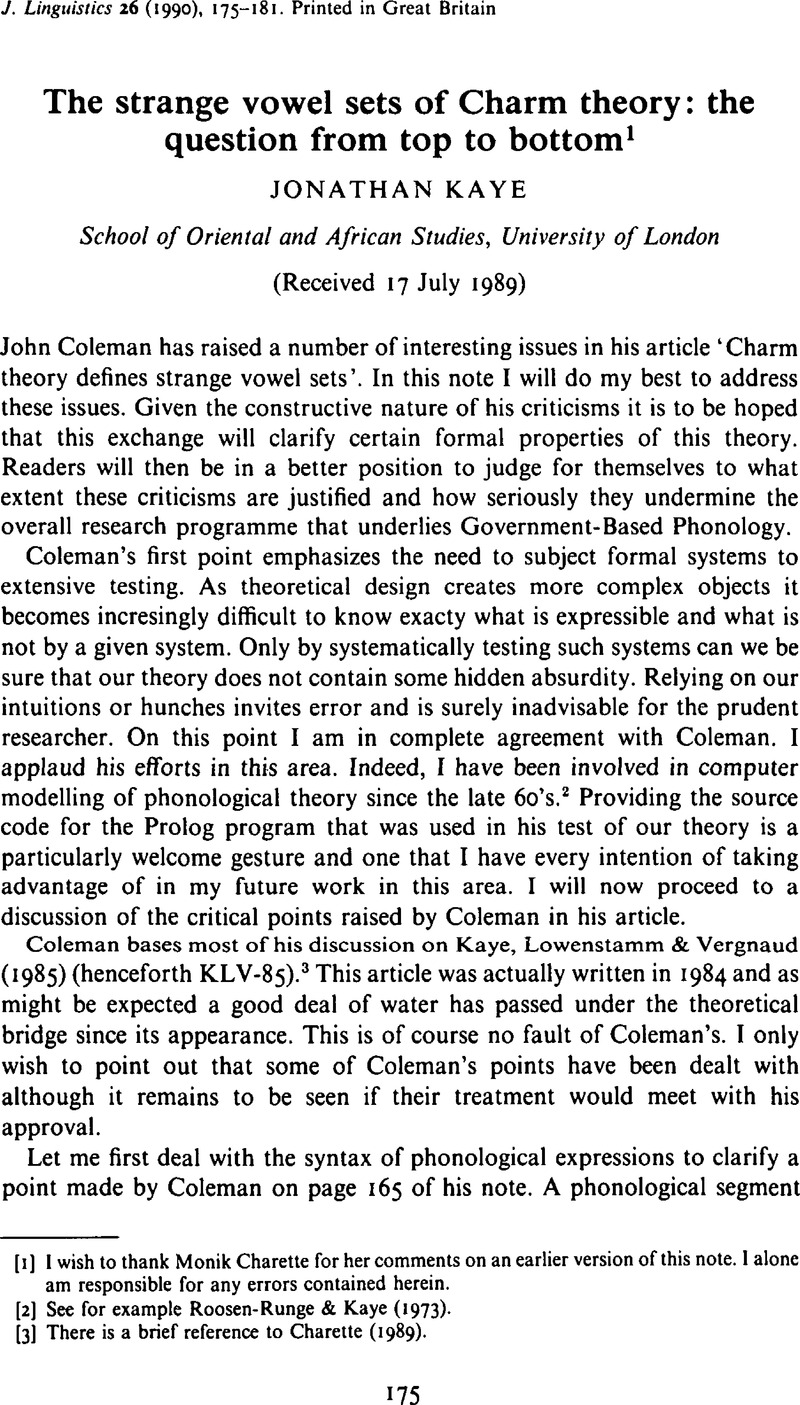Crossref Citations
This article has been cited by the following publications. This list is generated based on data provided by Crossref.
Coleman, John
1990.
Vowel sets: a reply to Kaye.
Journal of Linguistics,
Vol. 26,
Issue. 1,
p.
183.
Durand, Jacques
1995.
Alternances vocaliques en français du midi et phonologie du gouvernement.
Lingua,
Vol. 95,
Issue. 1-3,
p.
27.
Honeybone, Patrick
1999.
‘I blame the government’.
Language Sciences,
Vol. 21,
Issue. 2,
p.
177.
van der Hulst, Harry
2016.
Monovalent ‘Features’ in Phonology.
Language and Linguistics Compass,
Vol. 10,
Issue. 2,
p.
83.





